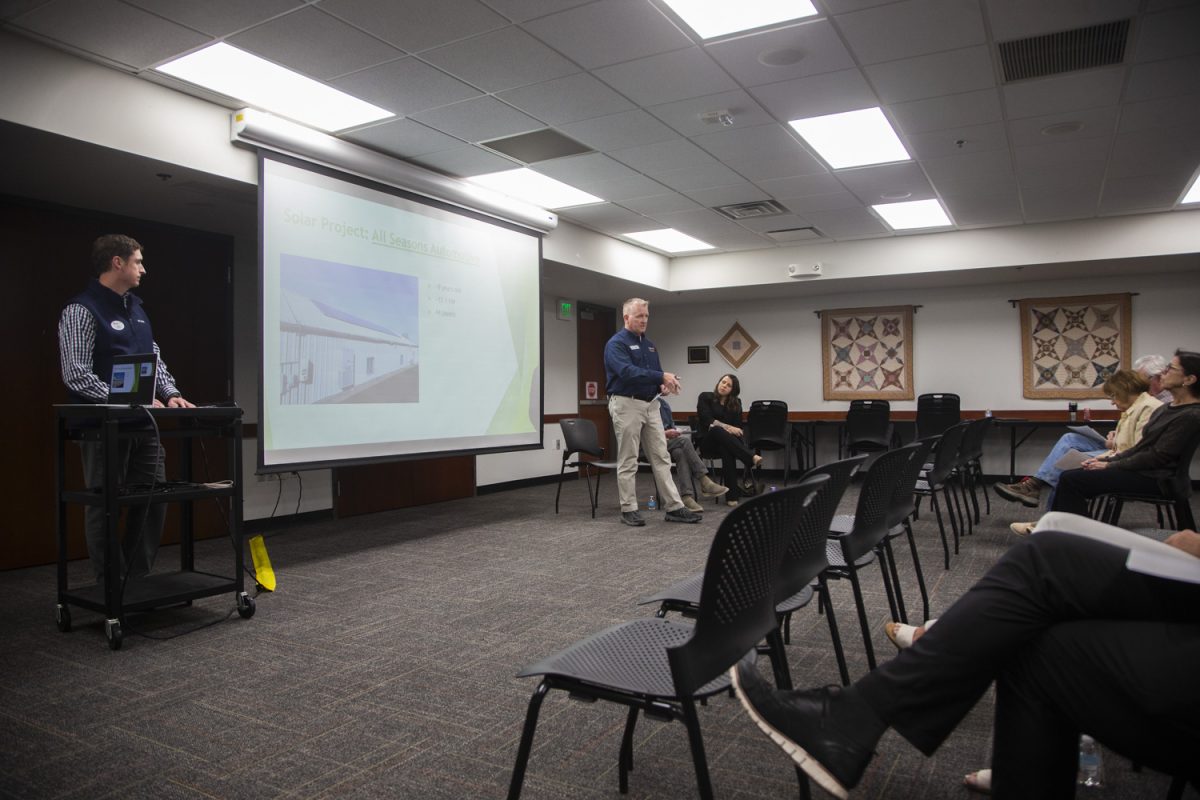According to the world economic forum, Iowa comes second in the nation in generating electricity through wind.
In 2023, the Iowa Utilities Commission found wind amounted to 54 percent of Iowa’s total energy output. Solar came in last at a little over 1 percent.
Considering the ample room solar energy has to grow in Iowa, Johnson County businesses, public officials, and advocates have come together to launch the Johnson County Solar Task Force.
The task force aims to install enough solar panels to meet the county’s goal of deriving 10 percent of its total energy from small-scale solar power by 2035.
The task force held its launch at the Coralville Public Library on Mar. 27, where a pre-recorded interview with Zhaoyu Wang, an electrical engineering professor and energy systems researcher at Iowa State, was presented.
“Ten percent is a very reasonable and achievable goal in my mind,” Wang said.
He cited a 2023 report by the Department of Energy, which found that around 5 to 6 percent of residential homes have rooftop solar installations. This number is expected to grow at a rate of approximately 20 to 25 percent.
Another aspect of the Department of Energy report that excited Wang was the Midwest accounting for a little over 40 percent of new solar installations in the nation.
“So, you can see in the Midwest, solar interest is rapidly growing,” he said. “So, that’s a good sign. We know we have a lot of wind in Iowa, but now we want to become maybe the top solar producer as well in the United States.”
Johnson County Clean Energy Board and Solar Task Force member Cheryl Miller described the possibilities that sprout up from the county meeting the 10 percent goal. Solar energy can be deployed anywhere, and with that, the county can break away from a centralized electricity system.
“[Solar] keeps local dollars local. It supports local jobs and local businesses,” she said. “It can add to the resiliency of the energy system by generating different kinds of electricity. It lowers the cost to consumers and businesses that install solar energy, and it just has benefits that a centralized system does not have.”
North Liberty Mayor and Solar Task Force member Chris Hoffman said, like any new technology, solar energy should be kept in mind through the whole construction process and not simply set aside as an add-on.
“If you go back 30 years, seeing a central air conditioning unit in a home was pretty rare. Now it’s basically a requirement. People need that,” he said. “We need developers and builders to get to that point with their customers.”
At the opening, a variety of local small solar projects and their progress were presented.
Jim Neff, the previous owner of All Seasons Automotive, had installed 44 panels on the roof of the repair shop over the course of nine years and saved around $2,700 annually off of his electrical bill.
Emily Zimmon, who presented the solar projects of Cedar Rapids’ Willis Dady Homeless Services, described that combined solar installations on the shelter and employment initiative building helped the shelter save $30,000 annually.
While Hoffman is proud of the work the task force has put in so far, he said they are still in need of members from every walk of life.
“We’re not the only ones we need,” he said. “We need folks to be a part of this task force that brings another lens to the conversation. We need accountants, we need builders, we need engineers. So, this task force, we’re building it so that it can grow.”



